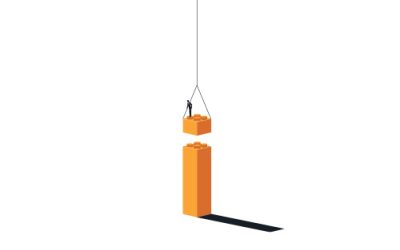Publishers are using newsletter subscriptions to help drive traffic to their website, increase advertising sales, and drive engagement across their brands.
Newsletters enable publishers to form direct relationships with their readers. Email newsletters have become vital pieces of publishers’ business strategy. Some are comparing the newsletters of today to the newspapers of earlier times.
Generally it’s the audience that determines what kind of format you’re going to use. One company, for example, uses a headline followed by just a brief summary, rather than the more common narrative format. The frequency of a newsletter can vary depending on when a particular audience tends to read it.
There are also different ways of looking at how successful the newsletter is. It’s not just a matter of looking at click rates. Publishers are also looking at things like list growth, when the newsletter is opened, and clicks on links. There is no one single metric that determines the success of a newsletter, but a variety of different measures, depending on the goals of the publisher.
How to Create a Newsletter
Here are a few ideas on creating a newsletter that people will want to read.
The goal
The first thing to figure out, before you even begin writing, is what your overall goal is for writing a newsletter. In other words, what is the purpose of your newsletter, why are you writing them, what are you trying to achieve overall?
You are looking here at the bigger picture, at the overall content strategy. For example, do you want your newsletter to generate leads, increase your number of email contacts, or generate traffic to your website? Your newsletter goal should be linked to your overall business goals.
Content
Naturally, you’ll need content for your newsletters. There are many different ways to gather content. It’s always a good idea to bookmark websites that may be helpful when you come across them. Other places to look for content include the company blog, social media accounts, lead generation content, internal newsletters, and training documents.
If you’re looking for ideas, HubSpot has put together some of the best email newsletters across different industries. They are included in HubSpot’s Email Newsletter Lookbook.
Layout
You should have some idea of what the newsletter is going to look like before you start writing. Once you have this idea, you’ll know better how much space you might have for the content.
The template doesn’t have to be anything elaborate. Newsletters that only have the most basic text and color formatting also look good. The important thing is that the design makes it easy for people to read, scan, and click links. It also should be easy to read on a mobile device.
Writing
After you’ve designed the layout, you are ready to add the words and pictures. This is where the rubber meets the road, so you need to take the time to get it right. A good formula is to keep your writing simple, clear, and direct. Adding images will also help to engage the readers.
Also, make sure you edit and proofread your writing. Your copy is unlikely to be polished the first time around. So rewriting is as essential as the writing. And you need to proofread for spelling and grammar. It’s also a good idea to send the copy to someone else on your team to read it. They may spot some errors that you have missed.
Personalizing
If your marketing software enables personalization, you should add personalization tokens, which could have a big effect on conversion rates.
What to Avoid
There are also a few things you need to avoid in your newsletter.
For example, never use vague, general subject lines, such as “Newsletter.” Stick to one topic in the newsletter. If you try to cover too much, you may end up just confusing the reader. Also avoid putting too many links into the newsletter.
And be careful about too much self-promotion, which may also put readers off. People are reading the newsletters to learn something, to be informed and entertained, not to be bombarded by advertisements. A good rule of thumb is that a newsletter should be 90% content and 10% promotional. And be careful that you don’t make them too long.
We would love to show you what MagHub can do for your company. Contact us to learn more or to set up a real-time demonstration.




